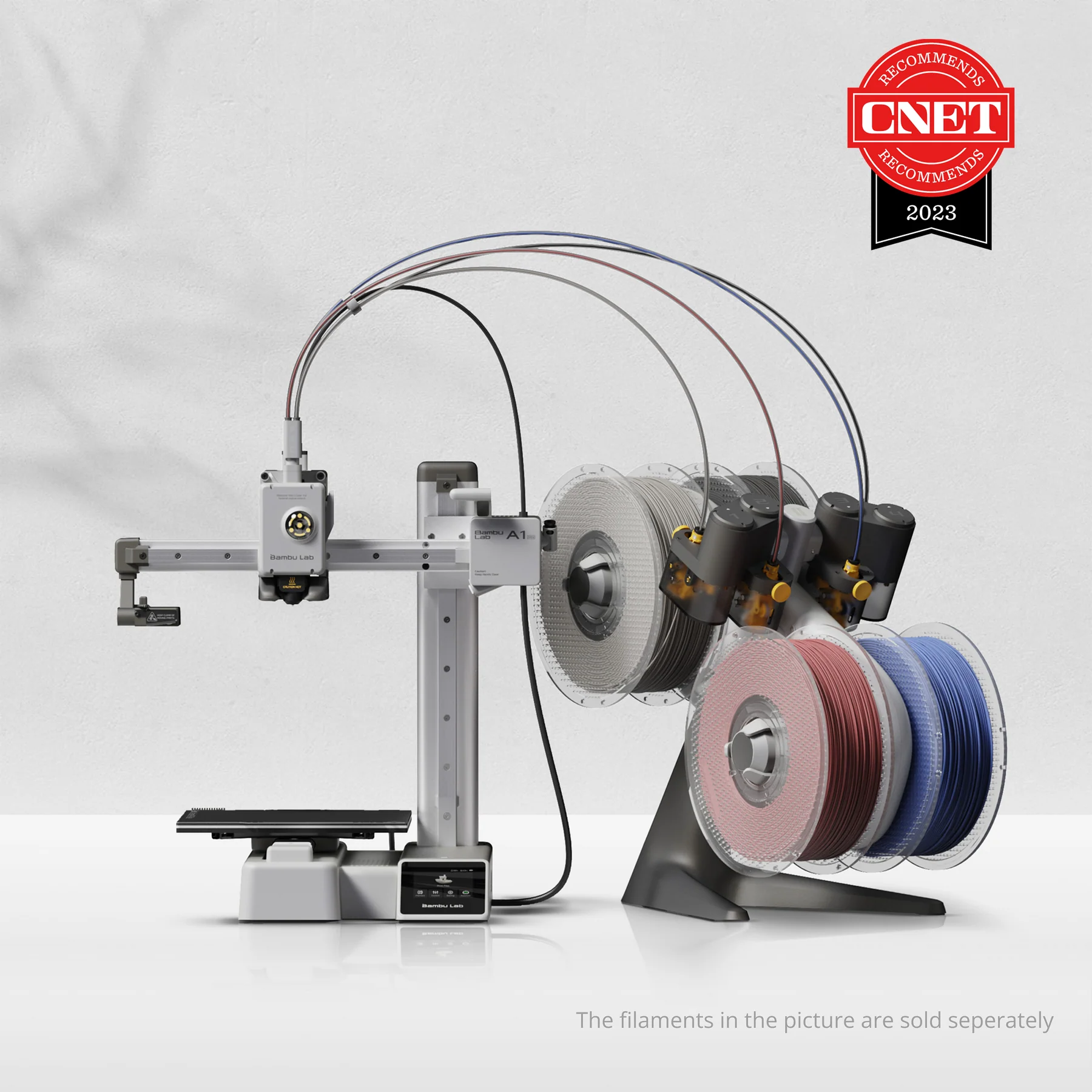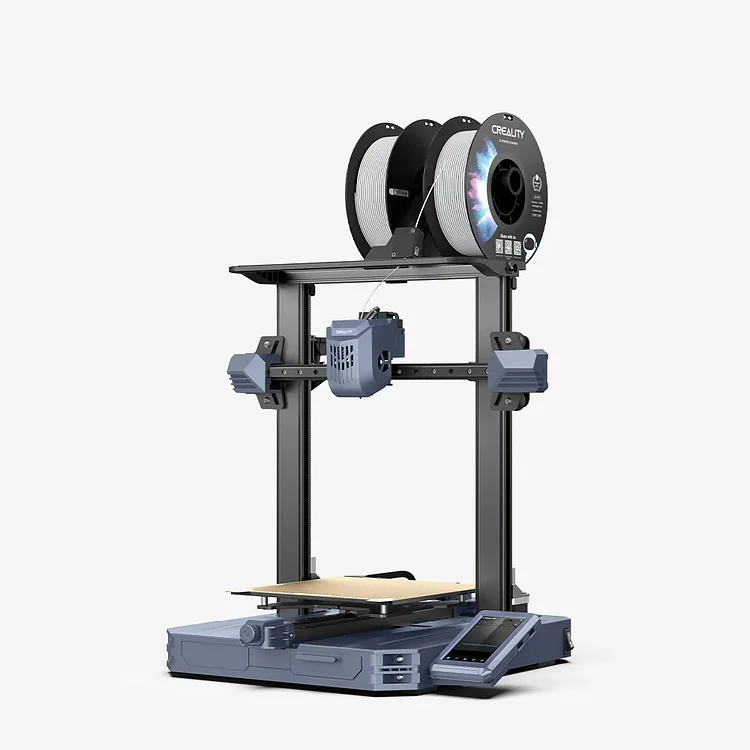Compare A1 Mini vs CR10 SE
Comparison between the best 3D printers
Choose the best 3D printer at the best price. The cheapest 3D printers are here.
Buy a 3D printer here with 3D Fila.
 |
 |
|
| Model | A1 Mini |
CR10 SE |
| Printing Material | Filament | Filament |
| Buy Filament for Bambu Lab A1 Mini | Buy Filament forCreality CR10 SE | |
| Estimated price | $549,00 | $386,00 |
| Manufacturer | Bambu Lab | Creality |
| Release Year | 2023 | 2023 |
| Print Volume [mm] | 180x180x180 | 220x220x265 |
| Printer Size [mm] | 315x347x365 | 490x470x625 |
| Weight [kg] | 5,5 | 6,9 |
| Power Loss Recovery | YES | NO |
| Enclosed printer | NO | NO |
| Bed Leveling | Automatic | |
| Filament End Sensor | YES | NO |
| Bed type | Heated | |
| Power supply system | Direct Drive | Direct Drive |
| Standard nozzle | 0,4 | 0,4 |
| Maximum Nozzle Temperature [°C] | 300 | 300 |
| Maximum Bed Temperature [°C] | 80 | 110 |
| Maximum printing speed [mm/s] | 500 | 600 |
| Filament holder | YES | YES |
| Camera for supervision | YES | YES |
| Recommended filaments | PLA, PETG, TPU, PVA | PLA, PETG, PET, TPU, PA Wood, ABS, ASA, PA, PLA-CF |
| Recommended slicers | Bambu Studio, Super Slicer, Cura, Prusa Slicer, Orca | Creality Print, Cura, Simplify3D, PrusaSlicer, Orca Slice |
| Maximum Resolution [mm] | 0,1 | 0,1 |
| Processor | 32-bit Silenciosa | |
| Display | Touchscreen 2,4'' | |
| Power Supply | 150 W | |
| Connectivity | Wifi, Bambu bus, Cartão SD | USB, Wifi |
| Operating systems | Windows, Linux, Macbook | Windows, Linux, Macbook |
| Date of registration in the system | 2024-04-10 | 2024-07-02 |
| Release date | 2023 | 2023 |
| Extra features | The Bambu Lab A1 Mini stands out not only for its impressive speed and automatic calibration, but also for its multi-color printing capability thanks to AMS Lite. This innovative system makes multi-color printing easy, making it accessible to everyone. AMS Lite, specific to the A1 Mini, supports up to four different materials simultaneously, providing creative freedom without complications. With comprehensive sensors for energy monitoring and recovery, a camera for timelapses and Wi-Fi control, the A1 Mini and AMS Lite together offer an intuitive and advanced 3D printing experience, ideal for materials such as PLA, PETG and TPU, and designed for simplicity and fast maintenance with quick-change nozzles. | The Creality CR10 SE stands out for its printing speed of up to 600 mm/s, easy and intuitive assembly, direct extruder with double gears, hotend with hardened steel nozzle and ceramic heater, automatic leveling with CR-Touch and pressure sensor, and use of Creality OS firmware based on Klipper, with automatic input shaping calibration. It also includes Wi-Fi connectivity, a filament out-of-stock sensor and a robust structure with linear rails on the X and Y axes. |
| Support for multiple colors and materials (AMS and CFS) | YES | NO |
Notes * |
||
| Cost-benefit | 7 / 10 | 7 / 10 |
| Hardware | 4.2 / 10 | 2.1 / 10 |
| Tela | . | . |
| Print volume | 3 / 10 | 3 / 10 |
| Performance | 4 / 10 | 5 / 10 |
Conclusion |
| In comparing the Bambu Lab A1 Mini and the Creality CR10 SE 3D printers, several key factors should be considered to determine which printer is the more suitable option based on user needs and budget. **Price**: The Creality CR10 SE is more budget-friendly, making it an attractive option for those looking to enter the world of 3D printing without a significant investment. In contrast, the Bambu Lab A1 Mini, while having a higher price point, offers advanced features that could justify the cost for more experienced users or those seeking specific functionalities. **Print Volume and Speed**: While both printers offer decent print volumes, the CR10 SE accommodates larger build sizes, making it suitable for larger projects. Additionally, the CR10 SE's impressive maximum printing speed enhances its performance for users focused on efficiency, surpassing the speed of the A1 Mini. **Features**: The A1 Mini stands out with its automatic bed leveling, filament end sensor, and power loss recovery features. Its ability to support multi-color printing is particularly noteworthy for users looking to explore creative and complex designs. Conversely, the CR10 SE, while lacking some advanced features, compensates with robust assembly, intuitive operation, and a solid build quality. **Print Quality and Compatibility**: Both printers maintain a maximum resolution of 0.1 mm and support a variety of filaments. However, the CR10 SE’s broad filament compatibility, including materials like ABS and ASA, gives it an edge for users looking for versatility in their printing projects. **User Experience**: The A1 Mini offers a more integrated and user-friendly approach with its touch display and an advanced monitoring system, making it ideal for beginners who appreciate simplicity. On the other hand, the CR10 SE's design caters to users who value hands-on assembly and flexibility. **Overall Cost-Benefit**: Evaluating the cost-benefit ratios, the CR10 SE scores higher, presenting a solid combination of features and overall performance for its price. Meanwhile, the A1 Mini, with its premium pricing, offers specific advantages that may appeal to advanced users or those who prioritize certain functionalities. **Conclusion**: Ultimately, the choice between the Bambu Lab A1 Mini and the Creality CR10 SE boils down to user priorities. If budget and versatility in filament use are paramount, the CR10 SE is the better option. However, for those who value speed, ease of use, and advanced features like multi-color printing, the A1 Mini could be worth the investment. Each printer caters to different segments of the 3D printing community, ensuring that users can find a model that aligns with their specific needs and creative aspirations. |

